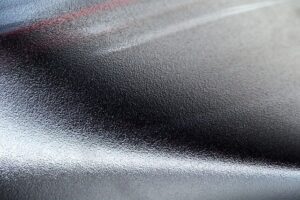 Electrical sensing systems (strain sensors, string-based, potentiometric, etc.) have been the main method of measuring physical and mechanical phenomena for decades. Despite their widespread application, electric sensing systems have a number of disadvantages, such as loss of signal transmission, susceptibility to electromagnetic interference, the need to organize an intrinsically safe electrical circuit (if there is a danger of explosion).
Electrical sensing systems (strain sensors, string-based, potentiometric, etc.) have been the main method of measuring physical and mechanical phenomena for decades. Despite their widespread application, electric sensing systems have a number of disadvantages, such as loss of signal transmission, susceptibility to electromagnetic interference, the need to organize an intrinsically safe electrical circuit (if there is a danger of explosion).
These inherent limitations make electrical sensors unsuitable or difficult to use for a number of tasks. The application of fiber optic sensing solutions is an excellent way to overcome these problems. The signal in fiber optic sensors is light in the optical fiber used instead of electricity in the copper wire of standard electrical sensors.
Over the past twenty years, a huge number of innovations in optoelectronics and in the field of fiber optic telecommunications have led to a significant reduction in the price of fiber sensor components and to a significant improvement in the quality of fiber optic systems. These improvements allow fiber optic sensors to move from the category of experimental laboratory devices to the category of widely used devices in such areas as monitoring of buildings and structures, etc.
The most widespread type of sensors
One of the most commonly used fiber optic sensors is considered to be fiber Bragg grating sensors (FBG). The fiber Bragg gratings in these sensors reflect a light signal whose spectral characteristic (wavelength) shifts along with changes in the measured parameter (temperature and/or deformation). During the manufacture of gratings, a region with a periodic change in the refractive index is created inside the optical fiber core, herewith, this region is directly called the FBG.
Optical fibers and fiber sensors are non-conductive, electrically passive, and immune to EM interference. The interrogation using a tunable high-power laser allows measurements to be made over long distances with virtually no signal loss. Additionally, in contrast to the electrical sensing system, each optical fiber channel can interrogate a variety of FBG sensors, which significantly reduces the size and complexity of such a fiber optic system.
Applications of fiber sensors
Fiber optic sensing solutions are ideal for applications where conventional electrical sensors (strain gauges, strings, thermoresistors, etc.) have proved difficult to use due to extreme conditions (long distances, EM fields, explosion protection, etc.). Since the installation and operation of fiber sensors are similar to conventional electrical sensors, it is easy to switch to fiber optic solutions. Understanding how such fiber optic systems work and the benefits of using them can greatly facilitate various measurement tasks (for example, structural health monitoring).
Benefits of FBG type
In short, the main advantages of FBG sensors include:
- high sensitivity and performance;
- relatively large range of measured deformations;
- the best weight and overall dimensions, small size;
- high noise immunity, insensitivity to electromagnetic interference, such as microwave field, spark discharge, magnetic fields, electromagnetic pulses of various nature and any intensity;
- absolute electrical safety due to the absence of electrical circuits between the fiber optic sensor and the recording module;
- full electrical, explosion and fire safety, high chemical resistance of sensor elements.
Extreme environmental conditions
The conditions of the environment and controlled conditions in which one or more external factors — radiation, temperature, electromagnetic field, aggressiveness, humidity, pressure, and deformation — have the maximum possible constant values are regarded as extreme.
In such conditions, primary converters of control systems for dangerous technological processes (oil production, transportation, and processing of oil and gas, nuclear power generation, storage of radioactive waste), monitoring and diagnostics systems for complex construction and engineering structures (dams, bridges, mines, etc.), and military and emergency management systems operate.
Currently, fiber optic technologies are widely used in various fields of science and technology. One of the main applications of fiber optics is the creation of portable high-sensitivity sensors. Pressure, strain, vibration, tilt, linear motion, and temperature sensors are widely applied in the industries of structural health monitoring pipelines, heating lines, power cables, mines, etc.
Application in radioactive conditions
Compared to fiber sensors, the lack of power supply at the location of electrical sensing systems does not prevent continuous remote monitoring of dangerous objects, such as nuclear power plants, in an emergency beyond design situations. For instance, the well-known events at the Japanese nuclear power plant “Fukushima-1” in 2011 were characterized by the fact that during the two weeks when the nuclear power plant was completely de-energized, there was no information from electronic sensors, which was extremely important for monitoring the technical condition of the emergency station.
Application in extreme temperatures
Problems of standard sensing systems control of tightness of tanks with liquid hydrogen, which is the fuel of modern rocket engines, has a temperature of -253 °C and very high fluidity, due to the fact that at such temperatures, most materials become very fragile, and the sensitivity of palladium sensors quickly decreases.
It is problematic to measure the pressure and dryness of superheated steam in gas generators and superheated gas in jet engine nozzles at temperatures up to + 600 °C since piezoelectric sensors quickly degrade at temperatures above + 300 °C. Modern FBG sensors of physical quantities are heat-resistant (up to +2300 °C) and cold-resistant (up to -270 °C). This provides reliable and long-term monitoring of the technical condition of high-temperature and cryogenic objects.
Operation during electromagnetic interference
Measurements of physical quantities using electrical sensing systems in conditions of high-power electromagnetic interference, including guidance on coaxial electrical cables and sensors from lightning discharges, in conditions of monitoring the patient’s pulse in a medical nuclear magnetic resonance facility, as well as measurements of high voltages and high currents in electrical engineering, are highly problematic.
Fiber Bragg grating sensors are completely immune to electromagnetic interference and are stable insulators. This makes it possible to measure high voltages up to 800 kV and high currents up to 200 kA with high accuracy (class 02s) by fiber optic sensing technology.
Application in an aggressive environment
Measurements of physical quantities of chemically aggressive media, long — term measurements of deformation of dynamically loaded objects and structures, as well as multi-sensor measurements-with the number of control points in several hundred and thousands, are also problematic for electrical sensing systems since the volume of measuring electrical cables is unacceptably increasing.
Distributed fiber optic sensors are multi-sensors: up to 10 thousand consecutive intra-fiber sensors can be used in one optical fiber (fiber optic cable) to measure physical quantities (temperature, strain, seismoacoustics, pressure, radiation, etc.). Multimode fiber optic cables allow performing remote measurements with high accuracy using borehole video cameras, and temperature fields — using pyrometers and thermal imagers.
Advantages of metrological calibration
A serious problem of electrical sensing systems embedded in objects (in the concrete of hydraulic dams and bridges, in the pylons and walls of high-rise buildings, etc.) presents the practical difficulty of their periodic calibration (metrological verification).
Modern fiber sensors have the function of metrological self-monitoring (FMSM) due to the multimodality of the optical signal, which allows for self-calibration of fiber optic sensors in real-time without stopping the controlled processes and without verification standards.
Today’s situation
In the last decade, there were implemented many similar applications of modern fiber sensors and systems in extreme environments of nuclear, oil and gas, and aerospace industries, shipbuilding, hydraulic engineering, energy, construction, military, and natural emergencies.
Moreover, the durability of FBG sensors in these extreme conditions creates an obvious advantage of their use in the energy, oil and gas, aerospace, construction, and transport industries in comparison with non-optical types of measuring systems.
Thus, the extreme operating conditions of fiber Bragg grating sensors, for example in wells (extreme parameters, flammable, aggressive and abrasive environments) or power plants (ultra-high currents and discharges, voltages and fields, significant ionizing radiation), actually belong to the usual operating conditions of fiber optic sensors.
How to find the best fiber optic solution?
If you are looking for reliable fiber optic sensing solutions for structural health monitoring, you should choose the Optromix company. Optromix is a fast-growing vendor of fiber Bragg grating (FBG) product line such as fiber Bragg grating sensors, FBG interrogators and multiplexers, Distributed Acoustic Sensing (DAS) systems, Distributed Temperature Sensing (DTS) systems. The company creates and supplies a broad variety of fiber optic solutions for monitoring worldwide. If you are interested in structural health monitoring systems and want to learn more, please contact us at info@optromix.com
 Fluorescent fiber optic sensors find their popularity in online and in-situ detection of metal ions. These fiber sensors allow for predicting and preventing the environmental problems caused by the ions. To be more precise, this type of sensor is different from refractometer-based ones. The fluorescent fiber optic sensors have a simple structure and their properties play a crucial role in sensing performance.
Fluorescent fiber optic sensors find their popularity in online and in-situ detection of metal ions. These fiber sensors allow for predicting and preventing the environmental problems caused by the ions. To be more precise, this type of sensor is different from refractometer-based ones. The fluorescent fiber optic sensors have a simple structure and their properties play a crucial role in sensing performance.

 The development of stretchable
The development of stretchable  Recently a team of scientists from an American research center has presented a
Recently a team of scientists from an American research center has presented a  A team of scientists has produced novel compact
A team of scientists has produced novel compact  A dramatic increase in the application of composite materials, involving aerospace technology, as well as other fields that need high reliability of structures, for instance, oil production, building industry, etc., makes the task of
A dramatic increase in the application of composite materials, involving aerospace technology, as well as other fields that need high reliability of structures, for instance, oil production, building industry, etc., makes the task of  New
New Researchers-manufacturers of
Researchers-manufacturers of  A team of researchers presents a
A team of researchers presents a  Fiber optic sensors
Fiber optic sensors Electrical
Electrical